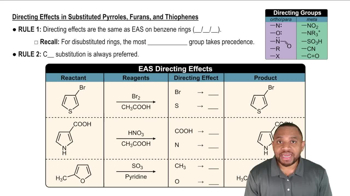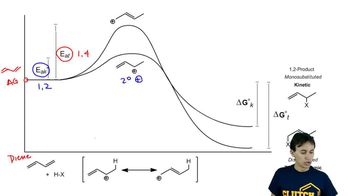Rank each group of compounds from most reactive to least reactive toward electrophilic aromatic substitution:
f. bromobenzene, chlorobenzene, fluorobenzene, iodobenzene
 Verified step by step guidance
Verified step by step guidance Verified video answer for a similar problem:
Verified video answer for a similar problem:



 4:29m
4:29mMaster Activity and Directing Effects with a bite sized video explanation from Johnny
Start learning